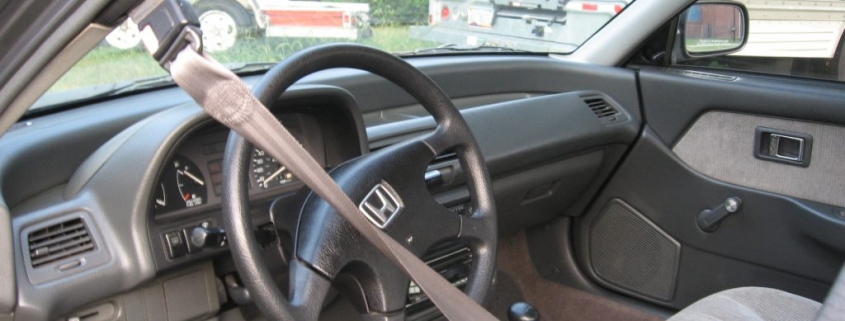Here Is Why the Automatic Seat Belt Was a Terrible Idea
If you look at just about any new car’s feature list, you’re sure to notice a lot of automatic safety features. Most cars nowadays have automatic parking brakes, automatic transmissions, and even automatic emergency braking systems. But did you know that cars in the 90s used to have automatic seat belts? Well, not all of them, which is a good thing because it was a terrible idea.
The automatic seat belt ensured some of your safety
If you’re not familiar with how the automatic seat belt works, then allow us to explain. When you entered the front seat of the car, either on the driver or passenger side, the motor-driven cross-chest belt would move along the A-pillar and then rest by the B-pillar. The purpose behind this mechanism was to automatically draw the belt across the passenger’s chest, reports the News Wheel.
However, with the cross-chest belt secure, the process was only half over. Next, the passenger would still be responsible for pulling over and buckling the separate lap belt. Without the lap belt in place, the cross-chest belt could cause a lot of damage to a person’s neck in the event of an accident. So technically, the automatic seat belt only kept you partially safe, unless you completed the process.
Issues with the automatic seat belt
Now that we can see how the automatic seat belt turned a simple one-second “pull and click” affair into a clunky two-step process, we can see why it wasn’t around for too long. Since the cross-chest belt automatically moved into position, many drivers and passengers would neglect the need for the lap belt. In fact, a study done in 1987 by the University of North Carolina concluded that only 28.6% of passengers actually clicked the lap belt.
Unfortunately, this malpractice ended up killing many drivers and passengers during the time that automatic seat belts were popular. According to a report by the Tampa Bay Times, a 25-year-old woman was decapitated when the 1988 Ford Escort that she was riding collided with another car. It turns out that she was only wearing the cross-chest belt at the time. Her husband, who completely buckled up, came out of the accident with serious injuries.
What’s even more unfortunate is that many automakers adopted the use of them. Automatic seat belts could be found in many GM cars from the early 90s, in addition to many Japanese cars like Hondas, Acuras, and Nissans.
Fortunately, airbags took over

After a short run in the production lines of many automakers, automatic seat belts were eventually phased out in favor of making airbags standard on all cars. However, we can now view the automatic airbag as a valuable learning lesson in automotive history. It’s just too bad some people were injured or killed along the way.
The good news is that in-car and safety technology is progressing at a rapid rate. So much so that our cars even brake for us when we’re not paying attention and alert us when we’re tired. Either way, we can thank our automatic driving features every time they intervene. While they might be annoying sometimes, at least they are not automatic seat belts.
RELATED: How Effective Are Seat Belts?
The post Here Is Why the Automatic Seat Belt Was a Terrible Idea appeared first on MotorBiscuit.







